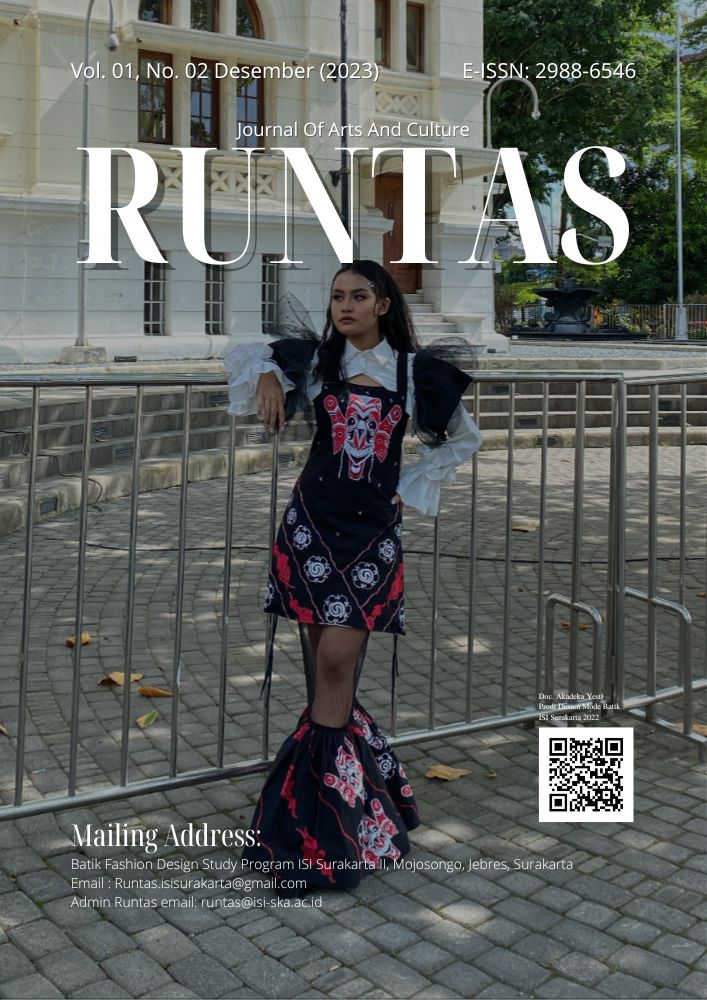sidebarrye
Make a Submission
staticcounter
Informationrye
download
Runtas: Jurnal Fesyen dan Wastra Nusantara
Phone : +62 813-2895-3377
Editorial Office of Runtas: Jurnal Fesyen dan Wastra Nusantara | Prodi Desain Mode Batik, Jurusan Kriya, Fakultas Seni Rupa dan Desain ISI Surakarta. Kampus II: Jl. Ring Road, Mojosongo, Kec. Jebres, Kota Surakarta, Jawa Tengah 57127
Email : isisurakarta@gmail.com
This work is licensed under a Creative Commons Attribution-ShareAlike 4.0 International License.
Published by Fakultas Seni Rupa dan Desain ISI Surakarta
Designed & Developed By : RYE EDUCATION HUB
A day without creation is merely time passing by. It is art that gives it beauty - Hari tanpa karya hanyalah waktu yang lewat. Karya menjadikannya indah
The beauty of a day isn't measured by the blue of the sky, but by the trace of creation we leave behind - Keindahan hari tak diukur dari langit biru, tapi dari jejak karya yang kita tinggalkan









